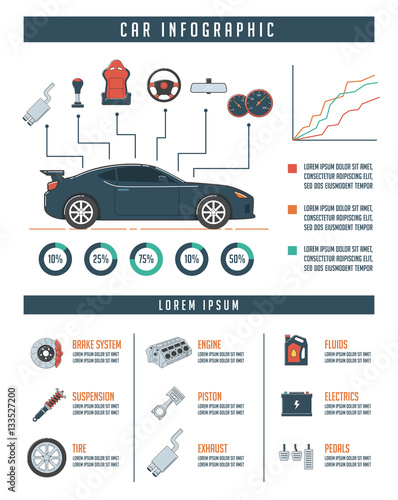Evaluating Your Cars And Truck'S Warning Indicators: What They Truly Communicate
Evaluating Your Cars And Truck'S Warning Indicators: What They Truly Communicate
Blog Article
Created By-Faulkner Winters
When you're behind the wheel, those beautiful warning lights on your dashboard can be a bit complicated. Do you know what they're trying to inform you about your cars and truck's health? Comprehending the relevance of these lights is crucial for your security and the long life of your car. So, Highly recommended Reading following time one of those lights pops up, would not you wish to decode its message accurately and take the required steps to resolve it?
Common Caution Lights and Interpretations
Identify usual caution lights in your vehicle and comprehend their meanings to make certain risk-free driving.
One of the most common warning lights consist of the check engine light, which signifies problems with the engine or exhausts system. If this light comes on, it's important to have your lorry examined without delay.
The oil pressure alerting light suggests reduced oil stress, calling for immediate interest to avoid engine damages.
A blinking battery light might suggest a faulty billing system, possibly leaving you stranded otherwise resolved.
The tire stress monitoring system (TPMS) light signals you to reduced tire pressure, affecting automobile security and gas performance. Overlooking this might bring about harmful driving problems.
The abdominal muscle light suggests a trouble with the anti-lock stopping system, compromising your capacity to quit swiftly in emergencies.
Lastly, the coolant temperature advising light warns of engine overheating, which can cause serious damages if not resolved quickly.
Comprehending these typical caution lights will help you deal with issues promptly and preserve safe driving conditions.
Importance of Prompt Focus
Comprehending the usual caution lights in your cars and truck is just the initial step; the importance of quickly dealing with these warnings can not be emphasized sufficient to guarantee your safety and security when driving.
When a caution light brightens on your control panel, it's your auto's method of communicating a possible concern that needs focus. Disregarding these cautions can bring about more severe issues down the road, compromising your security and potentially costing you extra in repairs.
Motivate interest to warning lights can avoid failures and mishaps. As an example, a flashing check engine light might suggest a misfire that, if left neglected, could trigger damage to the catalytic converter. Addressing this immediately can save you from an expensive fixing.
Similarly, a brake system cautioning light may signal low brake fluid or worn brake pads, critical parts for your safety and security when driving.
Do It Yourself Troubleshooting Tips
If you observe a caution light on your dashboard, there are a couple of DIY troubleshooting tips you can attempt before looking for professional assistance.
The primary step is to consult your vehicle's handbook to understand what the specific caution light shows. Often the issue can be as straightforward as a loosened gas cap setting off the check engine light. Tightening up the gas cap may settle the issue.
https://landenieysn.yomoblog.com/38547955/how-can-mobile-cars-and-truck-outlining-change-your-lorry-treatment-experience-while-making-sure-high-quality-discover-the-essential-factors-to-think-about-prior-to-choosing-a-detailer is a reduced battery, which can set off different alerting lights. Examining visit this website for deterioration and guaranteeing they're safe and secure may repair the problem.
If a warning light persists, you can attempt resetting it by detaching the automobile's battery for a few mins and afterwards reconnecting it. Additionally, checking Suggested Web site , such as oil, coolant, and brake fluid, can help fix cautioning lights related to these systems.
Final thought
Finally, recognizing your auto's caution lights is crucial for keeping your car running smoothly and securely. By immediately resolving these alerts and knowing what they indicate, you can avoid pricey fixings and prospective failures.
Remember to consult your vehicle's handbook for particular information on each alerting light and take action appropriately to make certain a trouble-free driving experience.
Stay notified, remain safe when traveling!
